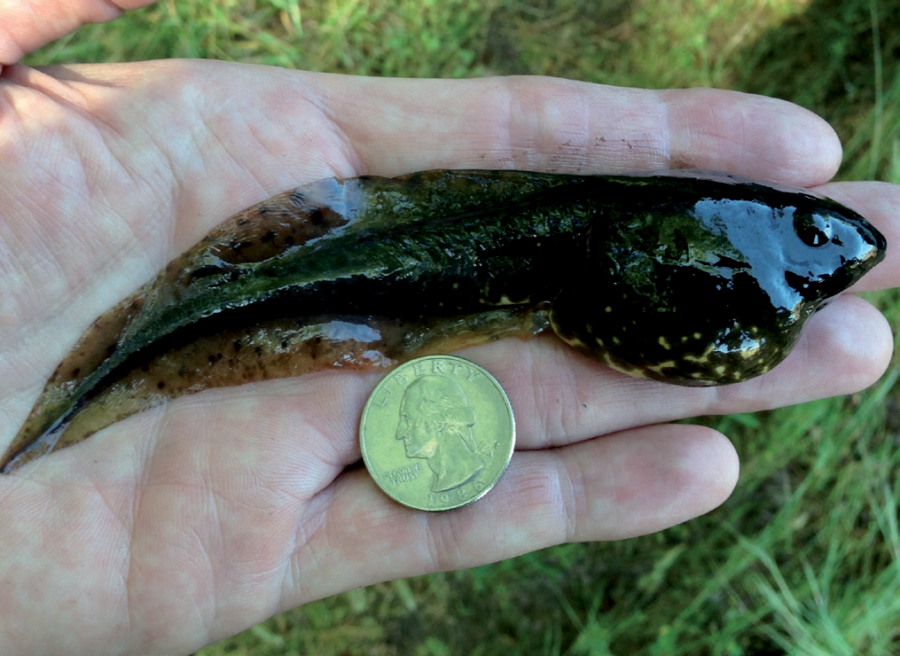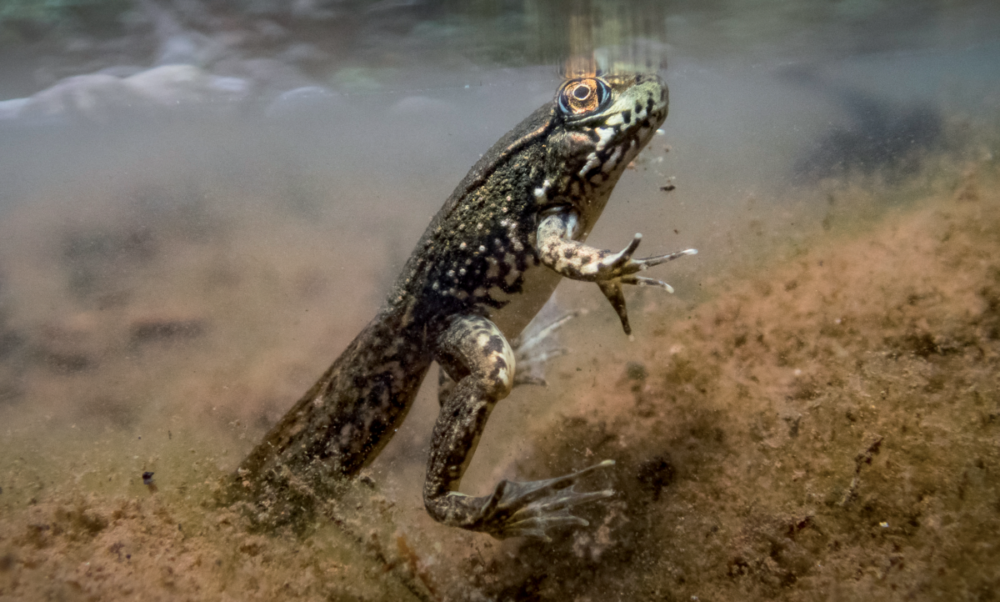
Wood frog tadpoles © Steven Johnson
Have you visited your local pond lately? If so, you may have noticed an abundance of tadpoles scurrying around. Tadpoles breathe by means of gills and typically have a large, flattened tail which they use to swim.
As a tadpole matures into an adult frog, through the process of metamorphosis, they undergo a complex series of changes both externally and internally. As they gradually begin to grow limbs (usually beginning with the back legs) and absorb the tail and gills, lungs simultaneously begin to develop. Late in development, tadpoles will often be found near the surface of the water, where they breathe air. During the final stages of external metamorphosis, the tadpole’s mouth changes from a small, enclosed mouth at the front of the head to a large mouth the same width as the head. Internally, the intestines shorten to accommodate the new diet as an adult.
Most tadpoles are herbivorous, eating algae and plant material. Some species are omnivorous, while others have been known to turn cannibalistic, eating smaller tadpoles. Spadefoots have the shortest process of metamorphosis—only taking a few weeks to go from egg to adult—while bullfrogs take up to two years to complete their transformation.

American bullfrog tadpole © J.D. Kleopfer

Metamorphizing green frog tadpole


